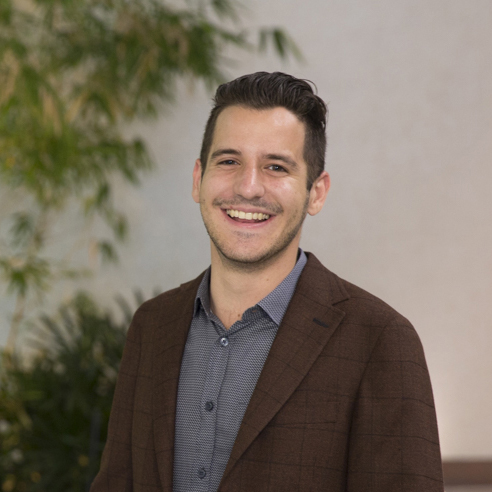Fernando Caravaggio

Fernando Caravaggio
Alumnus, PhD (2015), Medical Science
“Creativity emerges from following your passions and daring to wonder how things might be connected.”
I chose the University of Toronto because its Medical Science program allowed me to have access to the most advanced brain imaging technologies in Canada, coupled with access to state-of-the-art research hospitals and world-renowned faculty. The U of T library services, especially the Gerstein Science Information Centre, are also exceptional. Without access to these resources, my PhD would not be possible. I knew that by choosing U of T, my research would truly help us better understand the neurobiology of the brain with translational implications for treating persons with mental disorders.
U of T stood out from other graduate schools because it allowed me the flexibility to pursue my passions in research. Specifically, it allowed me to do brain imaging research using positron emission tomography (PET) at the Centre for Addiction and Mental Health (CAMH). Notably, CAMH is one of the few brain imaging centres in the world fully dedicated to research on mental illness, with access to a high-resolution head-dedicated-PET camera system. This system offers the highest resolution of any existing system for imaging the human brain with PET. After completing my thesis, I will be applying to medical schools. I hope to become a psychiatrist one day and conduct translational brain imaging research to help persons with severe mental illnesses.
To students thinking of graduate research, I would say it is very intense — get ready for a lot of hard work and sleepless nights — but it is very rewarding. Never be afraid to ask questions. I believe creativity emerges from following your passions and daring to wonder how things might be connected.
I’d also advise them to make use of the resources U of T provides for graduate students’ professional skills. The modern research climate is highly competitive. Being able to secure external funding, through effectively communicating one’s research and ideas to a lay audience, is of paramount importance. I found applying to these funding sources — the Ontario Mental Health Foundation, the Canadian Institutes of Health Research, the Brain Canada Foundation, etc. — to be a daunting task.
With the help of the office of English Language and Writing Support workshops at the School of Graduate Studies, I was able to develop the necessary skills to effectively pitch research projects and write research grants. With these skills I was able to win several external and internal research scholarships, including the Ontario Graduate Scholarship, the Mary Gertrude l’Anson Scholarship, and the Frist-Jus Memorial Award in Neuropsychopharmacology.
The ELWS workshops also helped to improve my oral presentation skills so that I could share my work at international conferences. With their help, I was able to secure external and internal travel awards, including the Society for Biological Psychiatry 2014 Travel Award, the School of Graduate Studies Conference Grant, and the Schizophrenia Research 2013 Best Poster Award.
In January of 2015, my first article as first author was published in Biological Psychiatry. It was a wonderful feeling to have one’s work and ideas finally shared with the world. I had already been able to present my research at several conferences — for example in New York, Orlando, and Vancouver. My favourite conference was the Society for Neuroscience Annual Meeting in New Orleans. It was inspirational to see over 5,000 people in the same room who are passionate about neuroscience. It made me fully realize why my research is important and how it is connected to a larger community of human knowledge and well-being.
And there is nothing quite like live jazz and all-you-can-eat gumbo on Bourbon Street.
